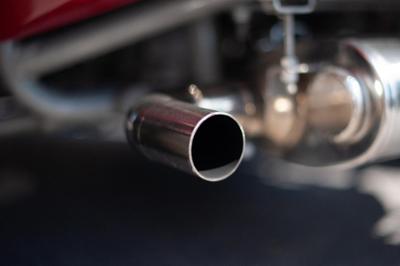

How does car pollution affect the environment?
With the advent of new sustainable mobility models, traditional combustion vehicles are beginning to compete with clean models. Most of this is due to the need to find different ways of moving around cleanly. In this article we break down the negative impact of cars on the environment.
An action as ordinary as taking the car to get around, however short, may have a negative impact on the environment. This is due to the combustion that takes place in a vehicle engine.
To better understand this, we should explain how a combustion engine works in a car. To produce the energy necessary for a car to move, the engine burns the fuel, ejecting from the exhaust pipe various gases and particulates such as nitrous oxide, carbon monoxide or carbon dioxide, all of which are contaminating for the environment. These elements that are ejected contribute to the production of greenhouse gases, which in turn accelerate climate change.
In addition to negative consequences for the environment, this also affects people. According to data from the World Health Organisation, the new limits established to regulate air quality would only be met in Spain by Badajoz, Benidorm, Caceres, Elda, Palencia, Telde and Zamora, therefore, the vast majority of cities, including regional capital cities, would be out, with bad air quality.
Thanks to this type of data, we see the high levels of air quality and how unimportant it is currently in major cities, as acknowledged by the data from this organisation.
How much CO2 does a car emit?
This depends on the fuel that a car uses. If we’re talking about petrol-fuelled vehicles, one that has an average consumption of six litres per one hundred kilometres emits an average of approximately 140 grams of CO2 for each kilometre that the car drives.
A diesel-fuelled vehicle that uses around five litres per one hundred kilometres emits approximately 132 grams of CO2 per kilometre.
Not only fuel causes contamination
Using the vehicle and its components also adds elements that are harmful for the environment. Among these are motor oil, antifreeze liquid or the car’s brake and clutch liquid. These products often fall directly on the asphalt and rain ends up carrying them, which makes it very difficult to reduce their contamination or to recycle them. However, recycling does happen when we take the car to a mechanic, they must process these waste products very precisely to hand them over to a recycling point that will decompose them.
Noise pollution, another major problem
In addition to emitting particulates or harmful elements directly into the environment, the noise made by vehicles also has a negative effect. Engine noise, blowing the horn or traffic jams are some of the situations that cause the most noise derived from driving.
This contamination has a direct negative effect on us. Exposure to these factors causes stress, anxiety and even insomnia derived from the noise.
The future includes non-contaminating vehicles
As we saw in the article “Alternative fuel for transportation”, the progress and development of industries has led to a boost in finding new methods to promote the various mobility options that will not have a negative impact on the environment.
Promoting these new models is essential for the proper development of urban and rural environments, because the reduction of the negative impact is quite notable and is achieved thanks to using vehicles that move using clean energy.
The most common vehicles in this type of mobility are hybrid cars, which are fuelled by a combination of electricity and traditional fuel, and vehicles that run 100% on electricity. Alongside these are gas, hydrogen and biofuels.
But contamination goes beyond just using the car or not, lifestyles and mobility methods also play their part. The use of public transportation, walking or cycling to travel. This is a matter of social awareness so that all elements of society will become aligned towards a sustainable and less contaminating mobility.





